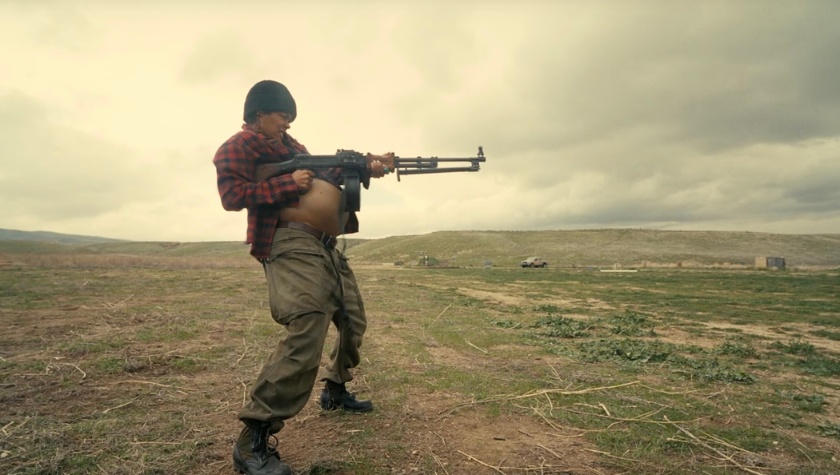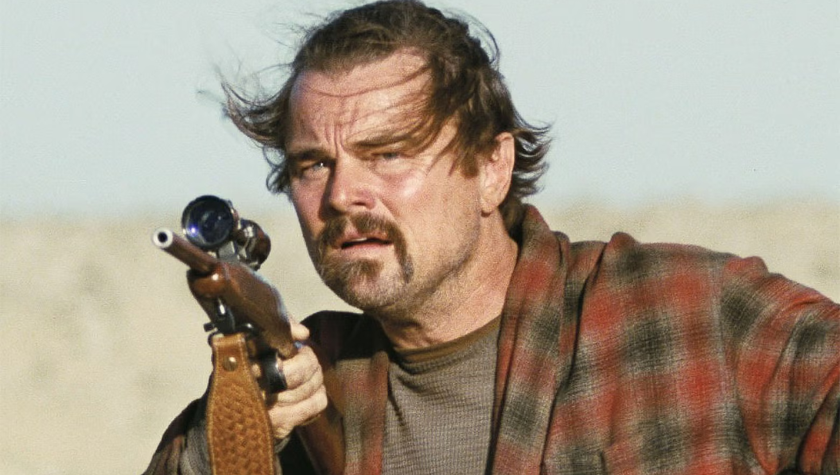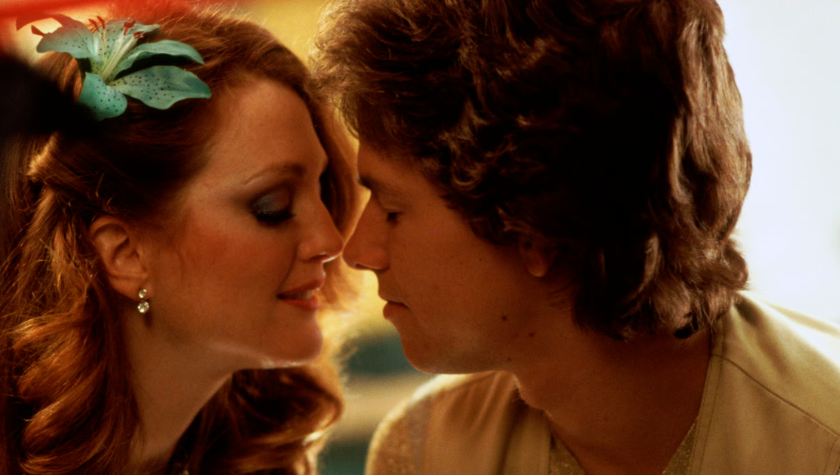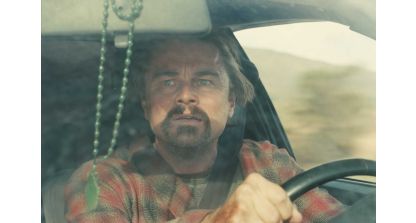From the very first frame, filmmaker Paul Thomas Anderson makes sure you understand the rules of his world. Yet, in true PTA fashion, just when you think you’ve figured them out, he delivers something you never saw coming.
“You have to let the audience know, hopefully in the first act, what the parameters of the playpen are going to be,” Anderson, writer and director of One Battle After Another, explained in a Los Angeles Times interview about the film’s opening scene.
That idea holds true across all of Anderson’s work. From the opening moments of Boogie Nights to One Battle After Another, he sets a tone that creates both clear expectations and the sense that almost anything might happen. And even as audiences learn to expect the unexpected, there are still moments that take them completely by surprise.
Inspiration a.k.a. It’s OK to “Borrow”
Anderson’s movies are unique, yet inspired by the greats. Camera shots and scenes in Boogie Nights and Magnolia harken back to Martin Scorsese’s style of filmmaking. One Battle After Another features a car chase scene that feels like it was straight out of an Alfred Hitchcock thriller. Even the tone feels like the 1970s conspiracy thrillers, like The Parallax View and Three Days of the Condor, where paranoia meets reality as the government is constantly at the heels of the protagonist.
One Battle After Another could be filled by actors like Robert Redford or Warren Beatty in their 1970s heyday, and the plotline fits like a glove. The movie follows Bob (Leonardo DiCaprio) whose life as a revolutionary catches up to him after 16 years when a malicious government official tries to track down Bob and his daughter.


The Characters in a PTA Film
It’s no surprise that early on PTA could build amazing ensemble casts.
PTA is a master at creating memorable characters that are both quirky and relatable, either not as smart as they think they are, or unsuspectingly competent.
His characters frequently get in their own way and try to disguise who they really are. “I was only a few pages in by the time I knew I absolutely wanted to do it,” Sean Penn shares in a Vanity Fair interview. “I remember the words ‘he’s going there’ going through my head, because I had no idea what the subject matter was going to be, what it was going to be approaching or reflecting about our lives today.”
If you’ve seen the movie, you know what that ‘going there’ moment is. If not, don’t even try to guess it.
This shows how critical those first few pages in a screenplay can be, and how creating something different entices an actor to take on the role.
There are plenty of stories about screenwriters writing with a certain actor in mind:
- Quentin Tarantino wrote Jules in Pulp Fiction with Samuel L. Jackson in mind (it was first offered to Laurence Fishburne, who turned it down)
- Nick Stagliano wrote a supporting part in The Virtuoso for Anthony Hopkins, who accepted the role
- Ron Clements and John Musker wrote the original Aladdin with Robin Williams in mind. “I wrote the original script with the specific idea that Robin would voice the Genie and that he would be a visual as well as vocal shape-shifter. Robin would be encouraged to improvise to his heart’s content," Clements says.
DiCaprio and PTA had been eyeing each other for decades, with DiCaprio admitting he regretted turning down Boogie Nights, although he now can’t imagine it with anyone other than Mark Wahlberg.
“I’ve been wanting to work with you—Paul—for something like twenty years now, and I loved this idea of the washed-up revolutionary trying to erase his past and disappear and try and live some sort of normal life raising his daughter,” DiCaprio tells PTA in a shared interview with Esquire.
PTA adds, “It’s a nice character, someone who starts out wanting to change the world on the far left, but gets increasingly cranky and closed off as he gets older.”
Regarding building out Bob, DiCaprio mentions the process he and PTA went through to find the character he becomes: “We had a lot of talks about how to create a heroic character and bring a sense of reality and not have it be the typical choices that we’ve always seen. You said to me, it’s in the relentless pursuit of wanting to protect his daughter, not giving up, being there for her. It’s a story about a father and daughter and what you do in those positions, even if you’re up against all odds. There was some point in which we were talking about him going to John Wick extremes. I was like, No, give me a shittier gun, or what if there is no gun? Eliminating the violence from his character was the key to unlocking him.”


Telling a Timeless Story
Although the opening of One Battle After Another seems rooted in revolutionary themes—taking aim at banks and politicians from the 2008 financial crisis to today’s political climate—the story’s beginnings were, in some ways, quite different.
PTA based the movie off of the 1990 novel ‘Vineland’ by Thomas Pynchon, which begs the question, Where did the 1960s revolutionaries go? It’s a look into the transformation of the 1960s counterculture through Nixon and the War on Drugs and into the early 1980s.
While it feels like a satire or reflection on the United States of 2025, One Battle After Another is an idea that’s been stewing for decades.
“This story could be told 20 years ago. This story could be told in the Middle Ages. You could take this story and put it in space. The biggest mistake I could make in a story like this is to put politics up in the front,” Anderson says in his Los Angeles Times interview. “That has a short shelf life. To sustain a story over two hours and 40 minutes, you have to care about the characters and take those big swings in terms of the emotional arcs of people and their pursuits and why you love that person and why you hate this person. That’s not a thing that ever goes out of fashion. But neither does fascism and neither does people doing bad shit to other people. Unfortunately, that doesn’t go out of style, either. That’s just how we humans are.”
“When films preach, I stop listening,” PTA says in his Esquire interview. “It’s impossible to keep pace with the state of the world—this is why it’s best to focus on the things that never go out of style. You can figure out what never goes out of style by realizing what in a story is going to be the thing an audience really cares about. Our question is: Can a father find his daughter?”
PTA has been asking these questions since early on in his career. For Boogie Nights, it was all about figuring out what it means to be family. For There Will Be Blood, it’s about how far you would go for success.
Screenwriters should break this down to terms this simple in the script. You can talk about Terminator 2: Judgement Day as an epic science fiction film about machines taking over the world, but at its core, isn’t it just a mom trying to find and protect her son? Then throw everything you can at trying to stop that from happening.


The Big, Personal Story
PTA does two things really well: tell big stories and tell personal stories.
If you’ve ever watched one of his ensemble pieces, you’ll discover how personal the stories are in spite of how big the story wants to be. Look at Magnolia, PTA’s love letter to the San Fernando Valley. The stories are wide and varied, including a hopeless romantic cop, a misogynistic self-help guru, and a gold digger facing her demons and infidelities, to name a few. It’s a story about the San Fernando Valley, where PTA was raised and a place he has a fondness for. He made it personal to what he saw in the Valley.
Another movie that follows in this vein is Licorice Pizza, which is a rom-com looking at the 1970s in, yep, the San Fernando Valley. Let’s not forget this is where Boogie Nights takes place as well – the Valley.
PTA doesn’t shy away from his home (born and raised in Studio City) as he uses his own personal history in how he tells the story. This is quite common too – John Hughes was from the Chicago suburbs where most of his films take place. And rarely will you find a Woody Allen movie taking place outside of New York (until he went to Europe). Filmmakers can use the place they came from as settings for their movies – it adds authenticity.
One Battle After Another is a big movie that also feels personal. That’s because PTA saw in the story a father who cared deeply for his daughter and wanted to help her. PTA, like many times before, has created a group of characters who are far from perfect and often sabotage their own well-being, ensuring there is depth and meaning in all of them, and that each has a purpose within the story.
Watching his movies like There Will Be Blood, Phantom Thread, Magnolia and many more can inspire you to create a unique story of your own. And don’t worry about “borrowing” some of his ideas – all the greats do it.

